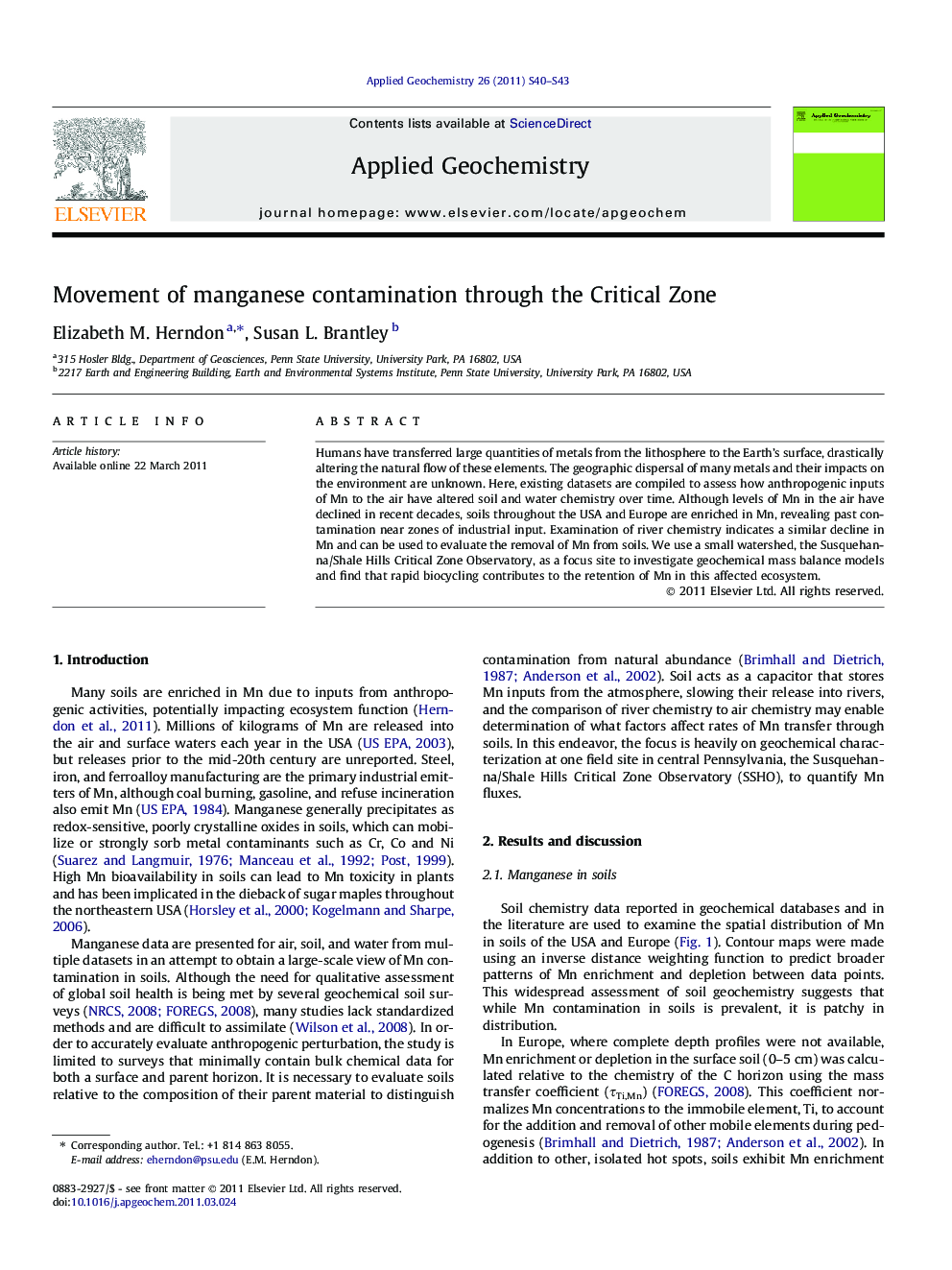| کد مقاله | کد نشریه | سال انتشار | مقاله انگلیسی | نسخه تمام متن |
|---|---|---|---|---|
| 4436455 | 1310683 | 2011 | 4 صفحه PDF | دانلود رایگان |

Humans have transferred large quantities of metals from the lithosphere to the Earth’s surface, drastically altering the natural flow of these elements. The geographic dispersal of many metals and their impacts on the environment are unknown. Here, existing datasets are compiled to assess how anthropogenic inputs of Mn to the air have altered soil and water chemistry over time. Although levels of Mn in the air have declined in recent decades, soils throughout the USA and Europe are enriched in Mn, revealing past contamination near zones of industrial input. Examination of river chemistry indicates a similar decline in Mn and can be used to evaluate the removal of Mn from soils. We use a small watershed, the Susquehanna/Shale Hills Critical Zone Observatory, as a focus site to investigate geochemical mass balance models and find that rapid biocycling contributes to the retention of Mn in this affected ecosystem.
► Soils throughout the United States and Europe are enriched in Mn near zones of industrial input.
► The decline of Mn in rivers reflects the decline of Mn in air since the mid-20th century.
► River chemistry can be used to evaluate the removal of Mn from soils.
► Rapid biocycling contributes to the retention of Mn in affected ecosystems.
Journal: Applied Geochemistry - Volume 26, Supplement, June 2011, Pages S40–S43